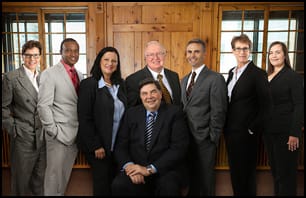U.S. Supreme Court Hands Unionized Employers a Victory in FLSA Cases, But Legal Landscape for Non-Unionized Employers Remains Unsettled
On January 27, 2014, a unanimous U.S. Supreme Court in Sandifer v. U.S. Steel Corp., — U.S. —-, 134 S.Ct. 870, 187 L.Ed.2d 729 (2014), held that the employer did not need to pay union employees for the time it takes them to put on and take off protective gear because their collective bargaining agreement did not provide for compensation for that time, citing section 203(o) (“Section 3(o)”) of the Fair Labor Standards Act (“FLSA”).
The FLSA generally requires employees to be paid for time spent “donning and doffing” protective clothing if they are required by law or the employer to change into such clothing at the work site. Section 3(o), however, permits unionized employers to exclude from compensation to employees the time spent by them “changing clothes” by either language in a collective bargaining agreement or by a custom or practice of non-compensation for such activities.
In the Sandifer case, the plaintiffs represented a class of current and former employees of a U.S. Steel facility in Indiana. The plaintiffs sought to recover backpay for time spent “donning and doffing” required protective gear such as flame-retardant jackets, work gloves, leggings, “metatarsal boots” and respirators. The applicable collective bargaining agreement between U.S. Steel and the union stated that the time spent dressing and undressing was not compensable. The plaintiffs argued that the donning and doffing of protective safety gear does not qualify as “changing clothes” and thus must be compensated. While the Supreme Court rejected this argument, it made comments in its decision indicating that where the protective gear at issue is less like clothing and more like equipment, donning and doffing it might be compensable.
At issue in the case were 12 items, and the Supreme Court found that the following nine items are considered “clothes” under Section 3(o): (1) flame-retardant jackets; (2) flame-retardant pants; (3) flame-retardant hoods; (4) a hard hat (“simply a type of hat”); (5) snoods (similar to a winter “balaclava”); (6) wristlets (“essentially detached shirt-sleeves”); (7) work gloves; (8) leggings (“much like traditional legwarmers, but with straps”); and (9) metatarsal boots (“just a special kind of shoe”). The Court found that these items qualified as “clothes” because they were “both designed and used to cover the body and commonly regarded as articles of dress.” Conversely, though, the Sandifer Court concluded that safety glasses, ear plugs and a respirator are not “clothes” under Section 3(o).
The Court also explored whether the donning of items like earplugs and respirators could be considered de minimis and, thus, noncompensable. The Court determined that the time spent putting on the clothes and other protective gear could together be considered “time spent changing clothes,” even though some of the items fell outside the definition of clothes.
Sandifer handed a victory to employers with unionized employees where there is either an express contract term or “custom or practice” of nonpayment or payment for a set amount of time, as those employers can avoid liability for a wide variety of items that employees put on and take off outside of productive time. For non-union employers, however, the Sandifer ruling leaves unchanged the donning and doffing rules under the FLSA. The Supreme Court assumed that putting on protective clothing required for the job is compensable time except when carved out by Section 203(o). Additionally, the Sandifer Court did not directly address U.S. Steel’s de minimus argument, leaving that an open question. Non-union employers must thus continue to use caution when making decisions on how to compensate employees who are required to don and doff clothes and protective gear for their work.
Even more recently, on June 30, 2014, the U.S. Supreme Court again sided with employers in Harris v. Quinn, 573 U. S. ___ (2014), in ruling that Illinois home health care workers cannot be forced to pay so-called “fair share” fees that help cover a union’s costs of collective bargaining. The Supreme Court said that while the workers are paid through state subsidies to provide care, they are not full state employees and do not have to pay union dues. While the Sandifer and Harris cases are not related, they may indicate future favorable rulings by the Supreme Court for employers in union cases are on the horizon.

